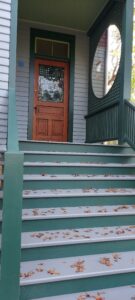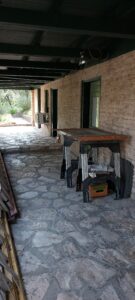Haunted Texas and Beyond our podcast will soon be telling the ghost stories of the Garcia House in the Travis Heights neighborhood.
This historical landmark was the home of Eva and Alberto Garcia. He was a doctor and she was a nurse and they moved to Austin and together cared, predominately for the black and hispanic citizens of Austin.
What the house looks like today:






Dr. Alberto G. Garcia was a pioneering open-heart surgeon, Maderista in the Mexican Revolution, brave opponent to the Ku Klux Klan, pathbreaking journalist, civil rights activist, anti-fascist, astrologer, yogi, siddha, and father and grandfather to a remarkable family. This biography of his life offers a unique glimpse into the Mexican Revolution, the long and ongoing relationship between Mexico and Texas, and an array of occultists and saints and their antagonists in nineteenth- and early twentieth-century Austin, Texas, and Mexico.
From the book:
Smeared with tar and feathers, and left for dead underneath the Congress Avenue bridge, the naked businessman lay in excruciating pain. As intended by his tormentors, the burning asphalt had seared deep through the surface layers of skin to muscle and bone. The tar emitted scalding heat and coated the skin, blocking his body’s ability to cool off.
A man in a suit climbed down the embankment. The small group of strangers surrounding the victim parted to give access to the young, compact, dark-skinned doctor with a mustache and round wire-rimmed glasses.8 It was Dr. Alberto G. Garcia—a fearless and outspoken opponent of the hooded men of the Capital City Klan No. 81, who had perpetrated this tortuous assault. Until October of 1921, Dr. Garcia had been the publisher of La Vanguardia newspaper where he, almost alone among civic leaders, loudly denounced the Texas KKK and those complicit in their takeover of local government.
The victim is known to history only as an Arab American businessman. An immigrant or son of immigrants.
And who was this man Alberto Garcia? An immigrant too, yet somehow unafraid and seemingly immune from Klan violence. As the victim became the fortunate recipient of Dr. Garcia’s full attention, he may have felt momentary relief from his physical anguish. Dr. Garcia, at that moment, was a new U.S. citizen and no longer an alien. He spoke perfect English and lived on a tree-lined street in a South Austin neighborhood, where no other Mexican American families lived. But still Dr. Garcia seemed so alien. Why was he, with his angelic aura, so accessible yet so unlike everyone else? Where did this man come from?
Any such thoughts would have been fleeting as Dr. Garcia had the man brought up to a vehicle to be transported to City Hospital. Dr. Garcia was well-known there and the medical staff in the 1920s was becoming all too familiar with protocols for treatment of severe burns from hot tar. The hooded torturers had chosen a method that would create pain long after they had fled. Tar was notoriously hard to remove from flesh. Butter or lard could be used without pulling out too much hair. Use of a disinfectant like iodine on raw wounds was necessary but excruciatingly painful. Fatal dehydration was prevented by immediate and plentiful intravenous fluids.
Few in Austin knew that Dr. Garcia’s Tulane medical school professor had been the doctor who invented the IV drip that would save this man’s life. Dr. Garcia had been a star student at Tulane. Not much more than eight years before rescuing this Arab American, during his medical school residency at New Orleans’ Charity Hospital, Dr. Garcia applied his skills to a young black man who had collapsed at Mardi Gras. In this emergency, Dr. Garcia had successfully conducted the second open-heart surgery ever performed in the United States. This was decades before another Tulane student named Michael DeBakey, a son of other Arab immigrants, performed path-breaking open-heart surgeries using the DeBakey roller pump.
So many in Central Texas who were suffering, or simply emerging into the world from their mother’s womb, were lucky to find themselves in Dr. Alberto G. Garcia’s capable hands.
‘The Life and Times of Alberto G. Garcia’ is available in San Miguel de Allende at the Tesoros bookstore in the Biblioteca and Garrison & Garrison Books. In Austin, Texas, it is available at Mexic-arte. It will soon be available at select bookstores in Austin and San Antonio, Texas.
https://austinghosttours.com/wooten-building-ghost-story/
https://austinghosttours.com/the-ghost-of-dr-wooten-communicated/





